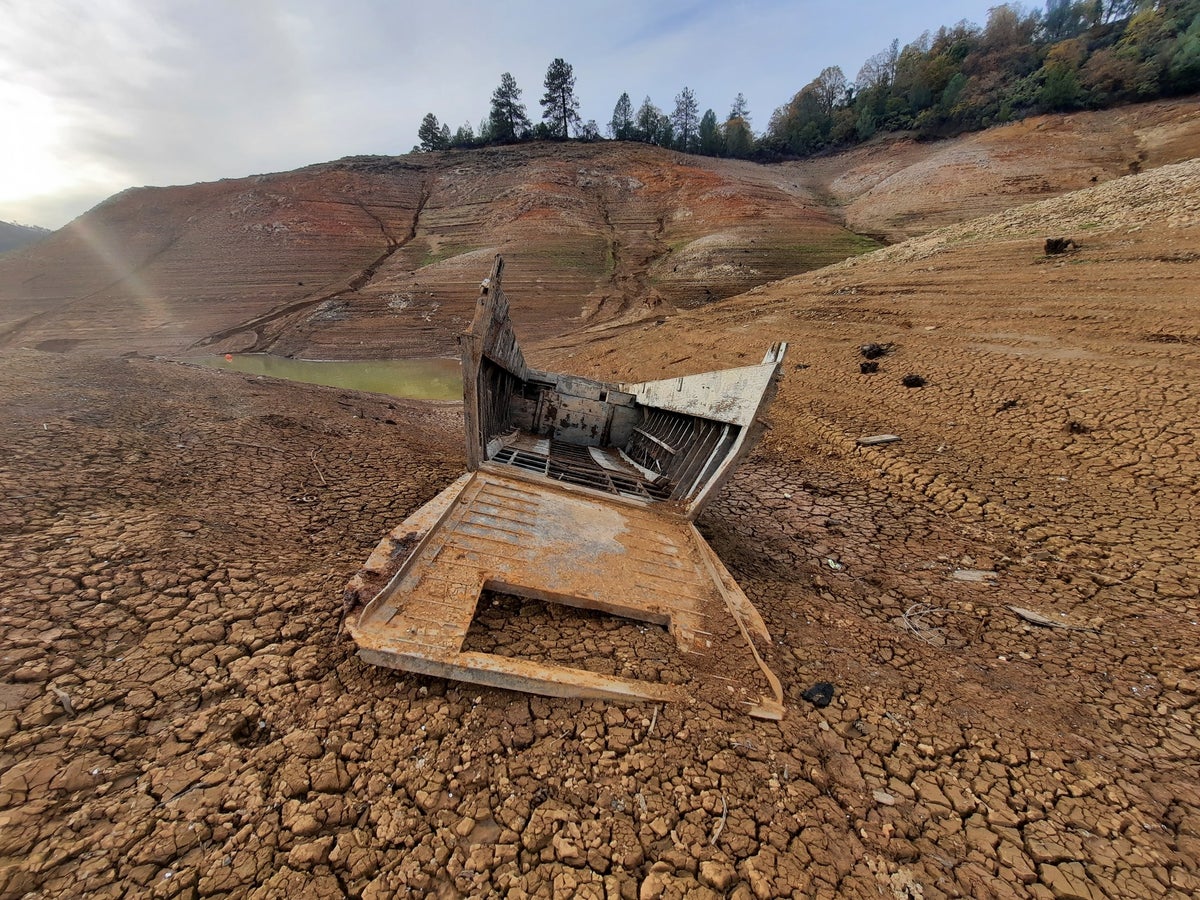
As drought pummels the western US, water levels in many reservoirs have dropped to extremely low levels.
In California’s Shasta Lake, dropping water levels have also revealed a once-hidden part of the nation’s history.
A boat that served in the Second World War has emerged on the reservoir’s shrinking shorelines and, according to the US Forest Service, this boat had a long and storied history before ending up at the bottom of the lake bed.
The Forest Service office in Shasta-Trinity National Forest shared photos of the sunken craft — which they’ve dubbed the “Ghost Boat” — on Facebook this week, sharing some of its history.
Apparently, the boat was assigned to the USS Monrovia, which functioned as US General George Patton’s headquarters during the Allied invasion of Sicily in 1943. At one point, the Monrovia also carried US General Dwight Eisenhower, who was serving as Supreme Commander of the Allied Expeditionary Force, according to the Forest Service.
Later, the Monrovia was moved to the war in the Pacific. The sunken boat is a craft called a “Higgins” boat, which was used to carry soldiers from large ships to open beaches.
The ‘ghost boat’ found on the shoreline of Shasta Lake in northern California
(Shasta-Trinity National Forest)
Exactly what brought this Higgins boat from the South Pacific to a reservoir in northern California is still a mystery — as is the story of how it sunk, the Forest Service said.
“There is more to discover of its history and obviously its time on Shasta Lake,” the agency added.
Shasta Lake has hit extreme lows over the past couple of years as drought plagued the American west. As of this week, the reservoir is at just 33 per cent of its full capacity, according to the US Bureau of Reclamation.
The boat first popped out from the lake last fall, the Forest Service said, at which point lake levels had dropped down toward 20 per cent of capacity.
The boat was assigned to the USS Monrovia during the Second World War, which served as General Patton’s headquarters as the Allies invaded Sicily
(Shasta-Trinity National Forest)
But this isn’t the first Higgins boat to emerge from a drought-riddled lake recently. This summer, another one of the crafts was spotted around Lake Mead on the border of Nevada and Arizona as that reservoir dropped.
In reporting on the Lake Mead boat, the National Parks Service told the Las Vegas Review-Journal that some of these ships were repurposed for “peaceful purposes” in sites like Lake Mead.
Lake Mead has dropped to record-low water levels this year as a result of the drought. In addition to the boat, falling water levels at Lake Mead have revealed multiple sets of human remains from the rapidly shrinking lakebed.
Southwestern North America is in the midst of a decades-long “megadrought” fuelled by the climate crisis which has decimated water supplies.
Shasta Lake water levels have dropped to just above 30 per cent capacity amid the region’s extreme drought
(Shasta-Trinity National Forest)
Nearly the entire region is under some level of drought, including the area around Shasta Lake, which is experiencing “extreme drought”, according to the federal government’s drought monitor.
At this level, “water is inadequate for agriculture, wildlife, and urban needs,” and “reservoirs are extremely low” the monitor warns.
In total, more than 52 per cent of the contiguous US — covering more than 126 million people and 321 million acres of cropland — are experiencing drought conditions.
Drought in the western US is being powered by human-driven warming from greenhouse gas pollution
(Shasta-Trinity National Forest)
A recent study found that the past twenty years in the southwest have been the driest two decades in the region for at least 1,200 years.
As the planet continues to heat up, conditions could get even drier. One study found that this summer’s dry conditions were made at least 20 times more likely because of human-driven warming.
In addition, a United Nations climate science panel has found that if the planet reaches 2 degrees Celsius of warming above 19th-century temperatures, droughts that once occurred every 10 years could occur about once every five years — and get even drier than before. Already, the world has warmed about 1.1-1.2C.
Source link
